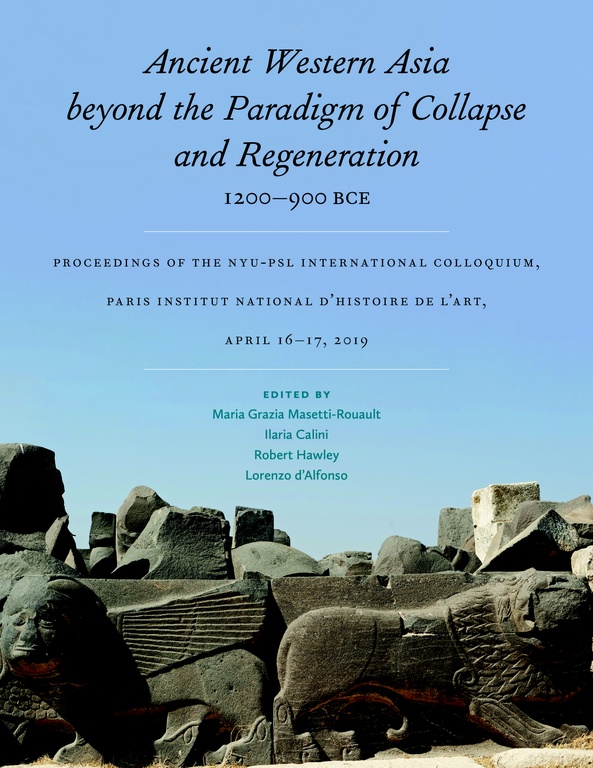Ancient Western Asia beyond the Paradigm of Collapse and Regeneration (1200–900 BCE)

- edited by: Maria Grazia Masetti-Rouault, Ilaria Calini, Robert Hawley, Lorenzo d’Alfonso
- contributors: Catherine Kuzucuoğlu-Bigonneau, Maria Grazia Masetti-Rouault, Ilaria Calini, Robert Hawley, Lorenzo d’Alfonso, Lorenzo Castellano, Mary Voigt, Lisa Kealhofer, Federico Manuelli, Clelia Mora, Alice Mouton, Geoffrey D. Summers, Aline Tenu, Aurélie Paci, Beate Pongratz-Leisten, Cinzia Pappi, Kate Justement, Lionel Marti, Carole Roche-Hawley, Jonathan Valk, Federico Giusfredi, Nathan Lovejoy, Daniel E. Fleming, Christophe Nicolle, Yifat Thareani, Marta Luciani
- May 7, 2024
- ISAW/NYU Press
- ISBN: 9781479834624, 9781479834631
Ancient Western Asia beyond the Paradigm of Collapse and Regeneration (1200–900 BCE) presents select essays originating in a two-year research collaboration between New York University and Paris Sciences et Lettres. The contributions here offer new results and interpretations of the processes and outcomes of the transition from the Late Bronze Age to the Iron Age in three broad regions: Anatolia, northern Mesopotamia, and the Levant. Together, these challenge the notion of a uniform, macroregional collapse throughout the Eastern Mediterranean, followed by the regeneration of political powers. Current research on newly discovered or reinterpreted textual and material evidence from Western Asia instead suggests that this transition was characterized by a diversity of local responses emerging from diverse environmental settings and culture complexes, as evident in the case studies collected here in history, archaeology, and art history. The editors avoid the particularism to which case studies are susceptible by adopting a regional organization, with the aim of identifying and tracing similar processes and outcomes emerging locally across the three regions. Ultimately, this volume reimagines the Late Bronze–Iron Age transition as the emergence of a set of recursive processes and outcomes nested firmly in the local cultural interactions of western Asia before the beginning of the new, unifying era of Assyrian imperialism.
This book will be of interest primarily to specialists in the art history, philology, and archaeology of the Ancient Near East.